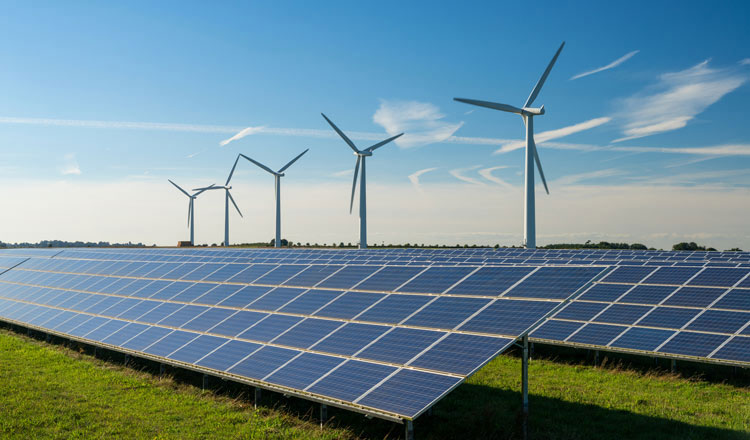An overview of Costa Rica’s Energy Sector in 2025
Costa Rica has long been celebrated for its dedication to sustainable energy, and as we move through 2025, this commitment remains the same. You might wonder why a small country’s approach to energy is significant on a larger scale. Costa Rica provides a clear example of how sustainable practices can be integrated successfully into national energy policies.
As you read on, you’ll gain insights into the innovative strategies and technologies that drive this green energy powerhouse. Through understanding Costa Rica’s journey, you can appreciate the broader implications of renewable energy initiatives for global environmental health and economic stability. In this article, we will discuss the current state of Costa Rica’s energy sector, examining how it balances economic growth with environmental stewardship.
Impact of the Energy Sector on Costa Rica’s Economy
Costa Rica’s energy sector significantly contributes to the nation’s economic landscape. The push towards renewable energy sources has not only established greater energy independence but also catalyzed growth in various economic sectors. The stable economic environment fostered by reliable and sustainable energy attracts foreign investment, enhancing job creation and infrastructure development.
One of the more dynamic aspects of this growth is seen in the tourism sector.
Tourists are increasingly drawn to Costa Rica to experience its green initiatives, such as tours of hydroelectric power plants and wind farms nestled in breathtaking landscapes. This surge in eco-tourism has bolstered local businesses and, by extension, the overall economy.
Costa Rica’s renewable energy initiatives have played a pivotal role in stabilizing the national economy, which in turn has had a positive knock-on effect on the tourism sector. As the country’s economy flourishes, bolstered by sustainable practices and investments in green technology, it becomes an even more attractive destination for tourists. This economic stability and modern infrastructure reassure visitors, who are increasingly confident in the level of services available, from healthcare to hospitality.
Tourists appreciate the upgrades in infrastructure and know that with their Costa Rica travel insurance, if they have a medical emergency they will receive good care. The decision to visit Costa Rica becomes easier with this confidence.
Current energy mix
Costa Rica relies heavily on renewable energy sources, which is central to its commitment to sustainability and independence in energy.
Hydroelectric power is the most used source in Costa Rica, providing about 78% of the country’s electricity. Thanks to its many rivers and high rainfall, hydroelectric plants are mostly found in the central and southern parts of the country.
Wind energy is the second major source, making up about 10% of the power supply. The wind farms are mainly in Guanacaste, a region known for its strong and consistent winds.
Solar energy contributes around 2% and is growing, especially in the sunny Pacific coast and northern areas. The government is encouraging more solar power use through various incentives.
Geothermal energy, which uses heat from the earth, supplies about 10% of the energy. This type of energy is especially viable in Costa Rica because of its volcanic areas, with plants near volcanoes like Miravalles and Rincon de la Vieja.
Although Costa Rica focuses on renewable energy, it still uses a small amount of non-renewable energy, less than 1%, mainly as a backup. These include diesel generators used during times when there isn’t enough renewable energy available.
Costa Rica continues to work on reducing its use of non-renewable energy, aiming to further minimize environmental impact and enhance the stability of its electrical system. This approach highlights Costa Rica’s successful model of sustainable energy use.
Challenges and barriers
Costa Rica has made great progress in using renewable energy, but it still faces some tough challenges and obstacles.
A major challenge is the need for better infrastructure to support renewable energy like solar and wind, which aren’t always reliable due to changing weather. Building this infrastructure and finding ways to store energy for when it’s needed can be expensive.
Environmental concerns are also a barrier. Although renewable energy is better for the environment overall, the projects can still harm local wildlife and ecosystems. For example, hydroelectric plants can change river flows and affect the animals that live there, and geothermal plants need careful management to prevent pollution.
The cost of setting up renewable energy systems is high, which can slow down investment in new projects. Also, as Costa Rica moves away from oil and coal, it has to consider the economic effects on industries and jobs that depend on these traditional energy sources.
Legal and regulatory issues can make it difficult too. Laws and rules need to be updated regularly to keep up with new technologies and changes in the energy market, but this can take a lot of time.
To overcome these challenges, Costa Rica needs a strong commitment from the government and private companies, good planning, and efforts to educate the public. This way, the country can continue to be a leader in renewable energy and sustainable practices.

